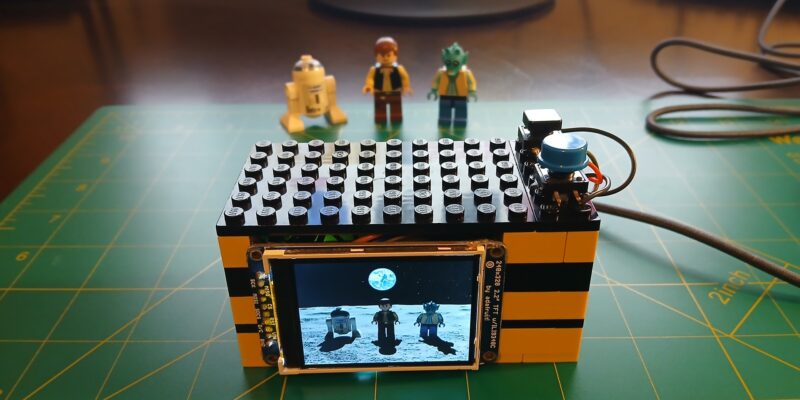Tiny Stirling Engine
By Ben Everard. Posted
This article was originally published as part of HackSpace magazine, which has since been incorporated into Raspberry Pi Official Magazine.

Stirling engines provide a way to turn heat into linear, then rotary motion. They were invented around the time of the steam engine, but never took off to the same degree; nowadays they’re making a comeback as a way of turning heat from the sun into something more harvestable. This example, with its incredibly small 0.02cc engine, won’t be powering a sustainable future for us, but it does give us a brilliant insight into just how accurately a skilled machinist can make things out of metal. You really have to watch the video to get a sense of the scale of the engine. We watched fairly unimpressed for a few minutes until a giant pencil hove into view, suddenly giving us a sense of scale and wonder. For example, the pins that connect the beam of the engine to the piston is made from 0.8 mm piano wire. That’s impressive, but even more impressive is the fact that one of those pins had to be cross-drilled and fitted with an even smaller 0.4 mm pin.

Advertisement
Christmas is coming – keep Santa on the right track with our Raspberry Pi gift guide!

Ben is the Editor of HackSpace magazine. When not wrangling words, he enjoys cycling, gardening, and attempting to identify wild mushrooms.
Subscribe to Raspberry Pi Official Magazine
Save up to 37% off the cover price and get a FREE Raspberry Pi Pico 2 W with a subscription to Raspberry Pi Official Magazine.
More articles
Project Gigapixel
With a medium format 6×7 lens, this camera could theoretically be capable of producing a 3.3 gigapixel image
Read more →

Banamera AI camera
Lego bricks are perfect for prototyping
Read more →

Meet Phil Hutchinson: element14 community organiser
Phil has always been “the technical guy”
Read more →
Sign up to the newsletter
Get every issue delivered directly to your inbox and keep up to date with the latest news, offers, events, and more.
